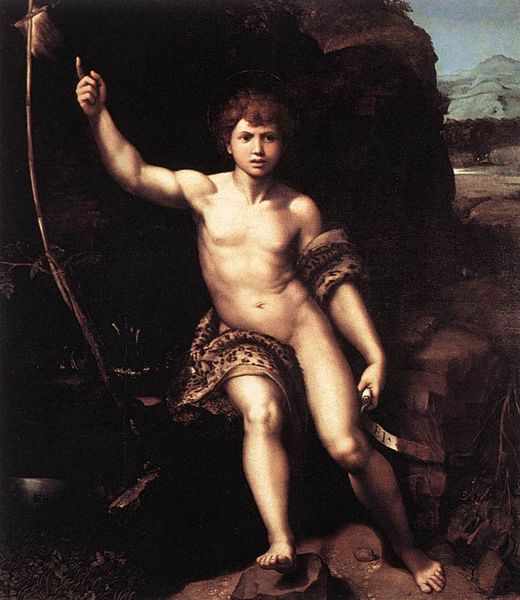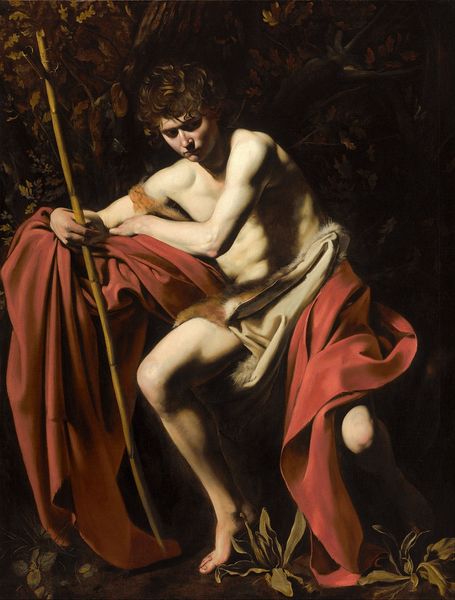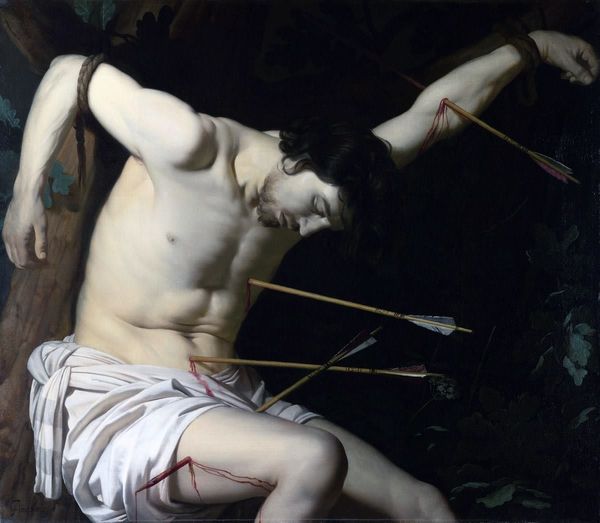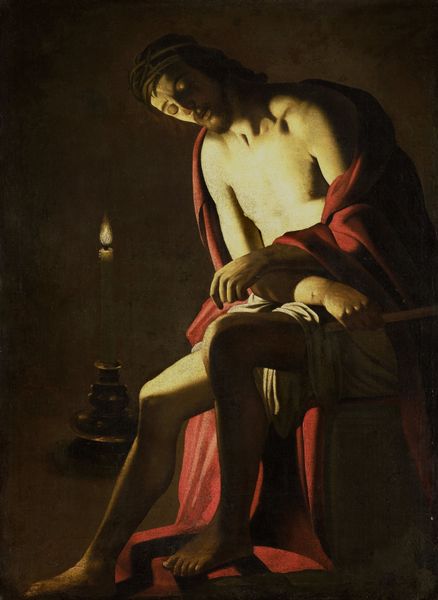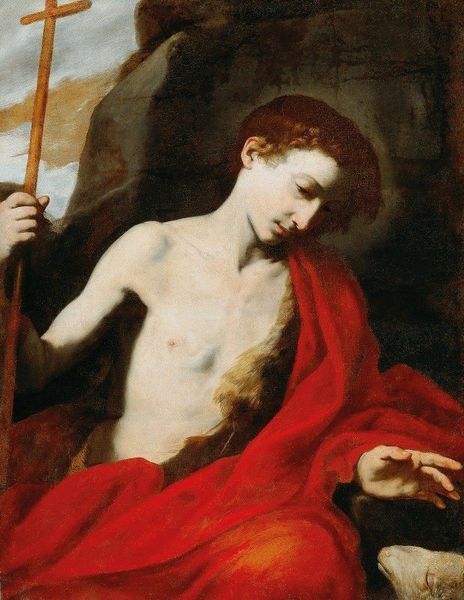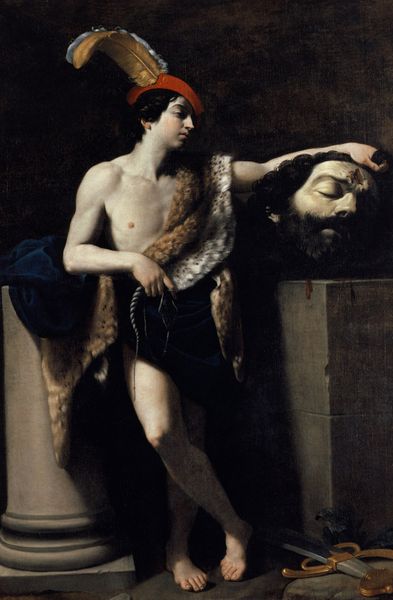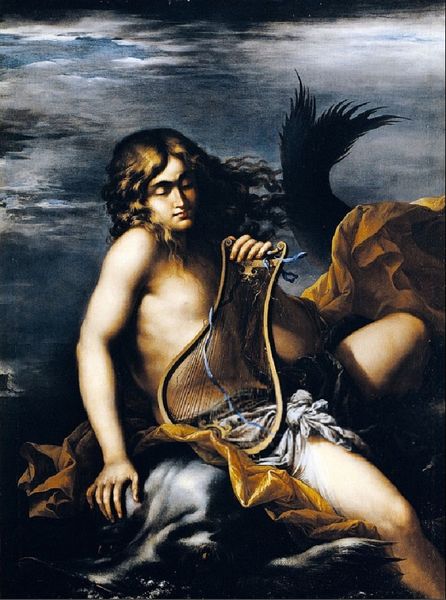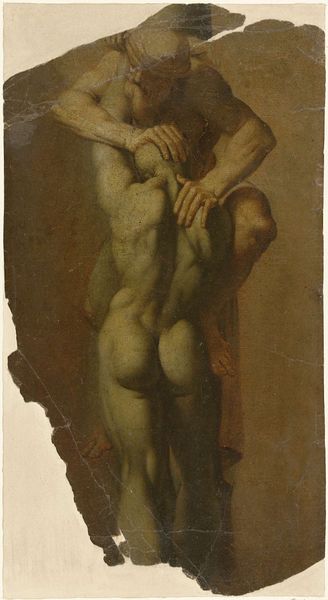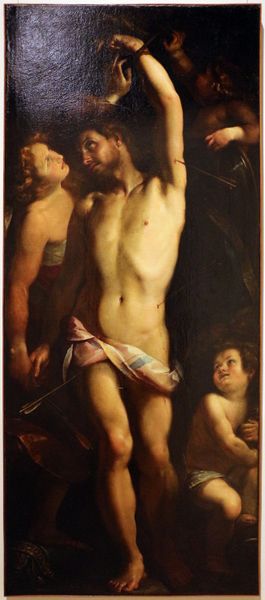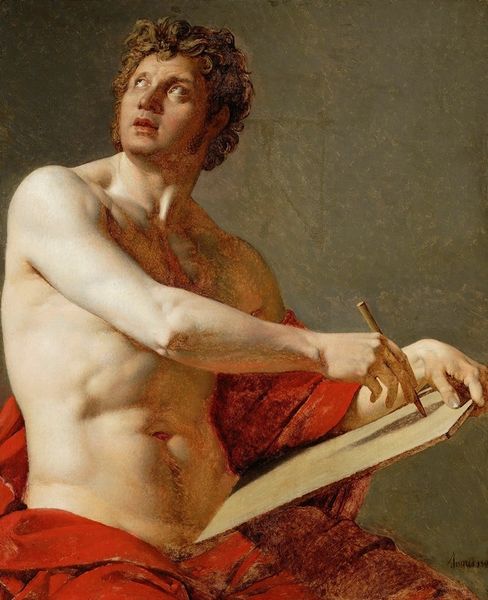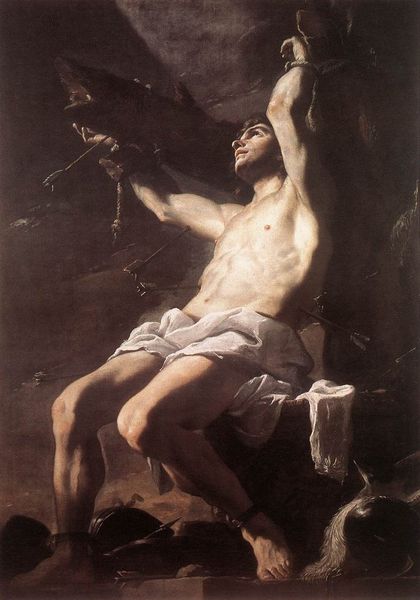
painting, oil-paint
#
portrait
#
baroque
#
painting
#
oil-paint
#
figuration
#
neo expressionist
#
history-painting
#
nude
Dimensions: height 76 cm, width 64 cm
Copyright: Rijks Museum: Open Domain
Curator: Here we see Juan Carreno de Miranda's "St. Sebastian," an oil painting created sometime between 1655 and 1665. Editor: Oof, first impression? Agony. And a certain theatricality in the way the light catches his skin against the dark backdrop, very dramatic! Curator: Absolutely. The Baroque style emphasizes those dramatic contrasts. Considering the historical context, we can see how this piece intersects with the artistic trends that favored dynamic compositions, rich colors, and intense emotion, reflecting the Counter-Reformation's spiritual fervor and its patrons consumption. The work and materials were a display of affluence. Editor: It's fascinating how pain can be depicted so... beautifully? There’s a vulnerability, a raw humanity laid bare here, not just physical suffering but something deeper in his expression. I wonder about de Miranda, what was he grappling with when he painted this? Did he see St. Sebastian as a martyr, a victim, or maybe even a symbol of resilience? I mean, he survived being shot full of arrows, the ultimate comeback kid! Curator: Right, his survival is key. St. Sebastian was a Roman soldier, martyred for his Christian faith. Arrows were part of it, yes. But his resilience led to his veneration as a protector against plague and disease; and beyond the iconography, considering oil paint at this time, and what pigments would be available would lead us to more concrete interpretations around availability of resource, artistic and religious context, in Spain under the control of Philip IV. Editor: The details, those rivulets of blood. Ghastly and graceful at once. You almost feel his pain, but from afar, like watching a play. The arrows themselves, the labor that goes into creating the individual piece would be very time consuming.. It makes you question who really makes the materials, what their relationship is with their craft? Did de Miranda ever interact with them at all? Curator: Precisely, these historical connections lead us to understand not only the artistic achievement but also broader implications regarding culture. The historical weight surrounding materials and religious connotations is not merely confined in individual art history. Editor: So, after dissecting it all, the light, the lines, the lore, I still come back to that face. Defeated, but not broken. Maybe that’s the enduring power of "St. Sebastian." Curator: A synthesis, perhaps, between the artist’s world and ours, and that is not without context.
Comments
No comments
Be the first to comment and join the conversation on the ultimate creative platform.

